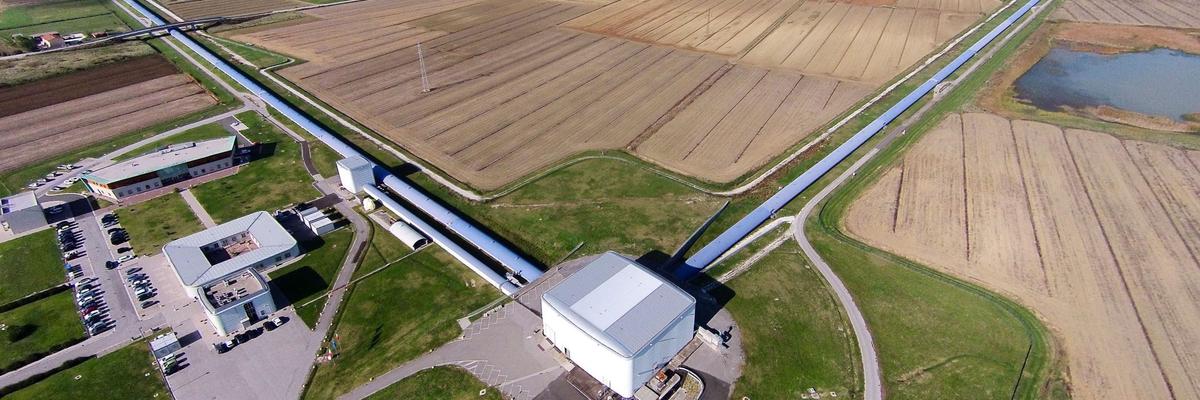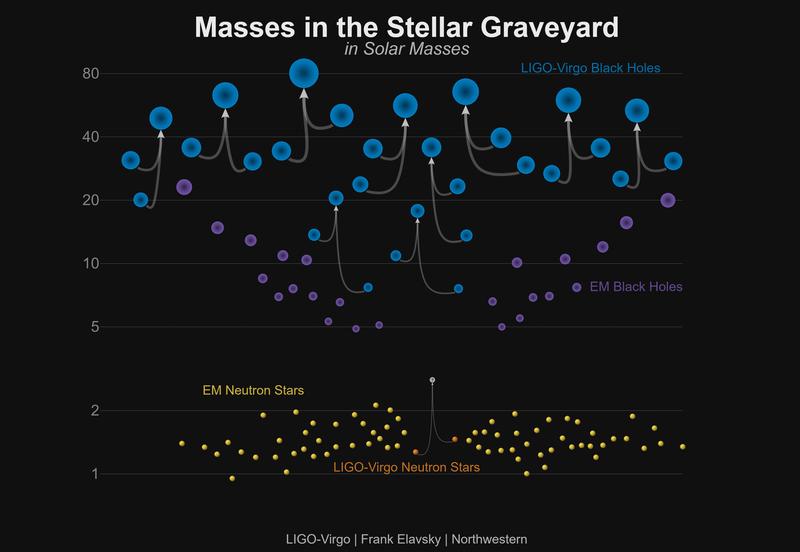Highlight
LIGO and Virgo Announce Four New Gravitational-Wave Detections
December 3, 2018

On Saturday, December 1, scientists attending the Gravitational Wave Physics and Astronomy Workshop in College Park, Maryland, presented new results from the National Science Foundation’s LIGO (Laser Interferometer Gravitational-Wave Observatory) and the European- based VIRGO gravitational-wave detector regarding their searches for coalescing cosmic objects, such as pairs of black holes and pairs of neutron stars.
The LIGO and Virgo collaborations have now confidently detected gravitational waves from a total of 10 stellar-mass binary black hole mergers and one merger of neutron stars, which are the dense, spherical remains of stellar explosions. Six of the black hole merger events had been reported before, while four are newly announced.

- Publications
- The LIGO Scientific Collaboration and the Virgo Collaboration, GWTC-1: A Gravitational-Wave Transient Catalog of Compact Binary Mergers Observed by LIGO and Virgo during the First and Second Observing Runs.
- The LIGO Scientific Collaboration and the Virgo Collaboration, Binary Black Hole Population Properties Inferred from the First and Second Observing Runs of Advanced LIGO and Advanced Virgo.
- Additional Material
- Interactive Mass Plot
- IFAE Research group
- Gravitational Waves Group
- Contact
